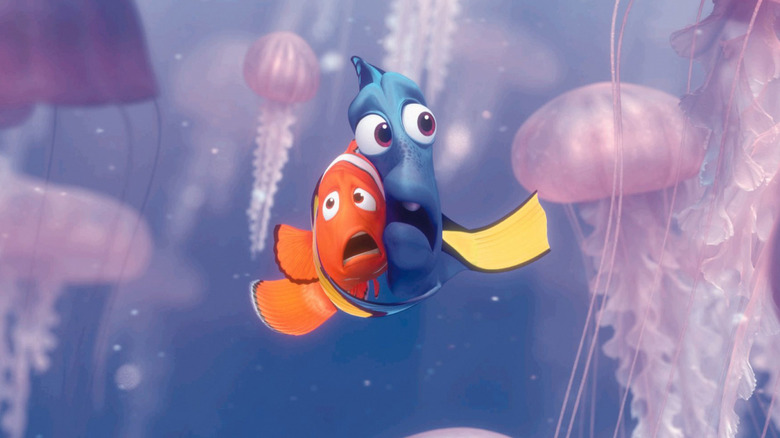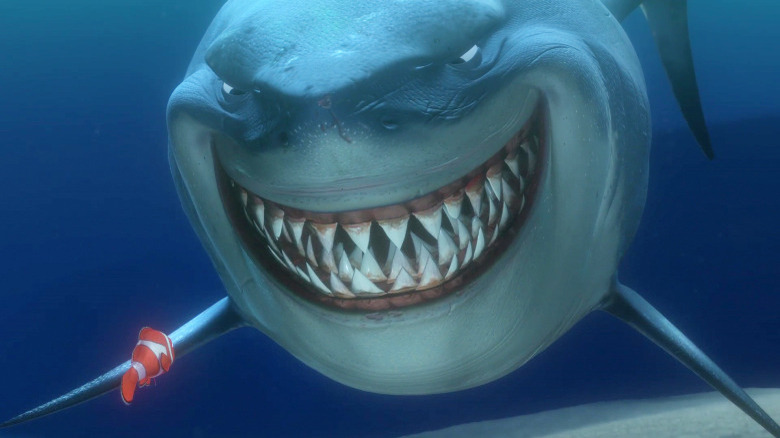Lion King Frustrations Built The Foundation For Finding Nemo
"Finding Nemo" is a funny, lovely, and touching film where the three leads — the neurotic clownfish Marlin, his young son, Nemo, and Dory, a regal blue tang with short-term memory loss — spend nearly every other scene being emotionally traumatized, having their very lives put in danger, or narrowly avoiding being maimed. There's a good reason, in other words, Pixar's beloved animated 2003 movie made the cut more than once on /Film's rundown of the most horrifying underwater scenes in films.
This was no accident, either. "Finding Nemo" more or less originated with director and co-writer Andrew Stanton's desire to create a rebuttal to what he saw as the romanticization of nature in "The Lion King." As it turned out, Stanton, who was hired to work at Pixar as an animator in 1990, got the chance to watch an early cut of Disney's animated 1994 classic and had come away less than impressed with what he saw.
"I remember just slamming on it," the filmmaker told Insider in 2016. "Shows what I know ... I was a hotheaded, piss and vinegar 20-something." Elaborating on this, Stanton explained that it was specifically the movie's famous "Circle of Life" opening number and the philosophy behind it that didn't sit right with him:
"I thought, oh, this is sort of whitewashing the whole idea that things actually want to kill everything else in nature. And I thought, could you make a movie that's more like 'Bambi,' where you work more with the rules of nature, where everything wants to eat you?"
The real predatory world
"Finding Nemo" doesn't waste any time before establishing just how dangerous life can be for creatures beneath the surface of the ocean. The movie opens with a barracuda eating Marlin's wife, Coral, and all their eggs, save for the one holding Nemo. It barely slows down from there. Before you know it, Nemo has been snatched up by a scuba diver, leaving Marlin and eventually Dory to brave sharks (who, in their defense, are trying to curb their fish-snacking ways), jellyfish, seagulls, and more over the course of their journey to rescue him.
As Andrew Stanton sees it, this depiction of nature lies in direct contrast with that in "The Lion King":
"'Nemo' is working with the real world, the real predatory world, and was definitely a response to ['The Lion King']. I liked working with the limitations of the rules of nature, as opposed to breaking the rules and saying everything's in it for the 'circle of life.'"
To be fair, "The Lion King" doesn't exactly paint a rosy portrait of the animal kingdom, either. Lest it be forgotten, the film shows characters being trampled to death by wildebeests, being nearly eaten by vultures or, in certain cases, other lions — and then there's that whole part at the end, where the villainous Scar is torn to shreds off-screen by hyenas. You know, for kids!
Still, there is a relentlessness to the sense of danger in "Finding Nemo" that "The Lion King" just doesn't have. Combined with a lack of scenes where different animals come together to sing and dance in bliss, it's fair to say Stanton's movie has more in common with a film like "The Land Before Time," so far as their attitudes toward the world of nature are concerned.

